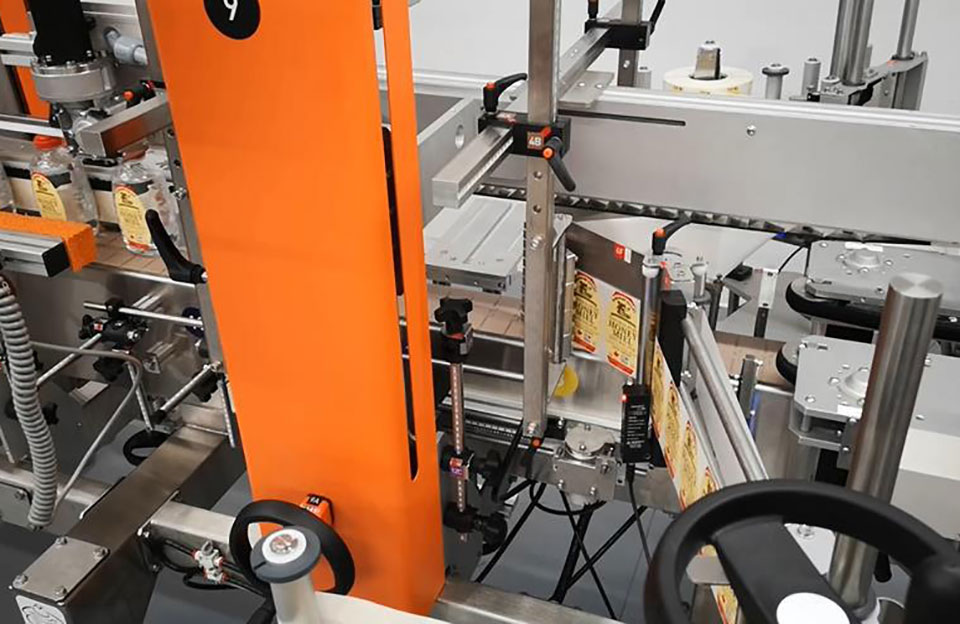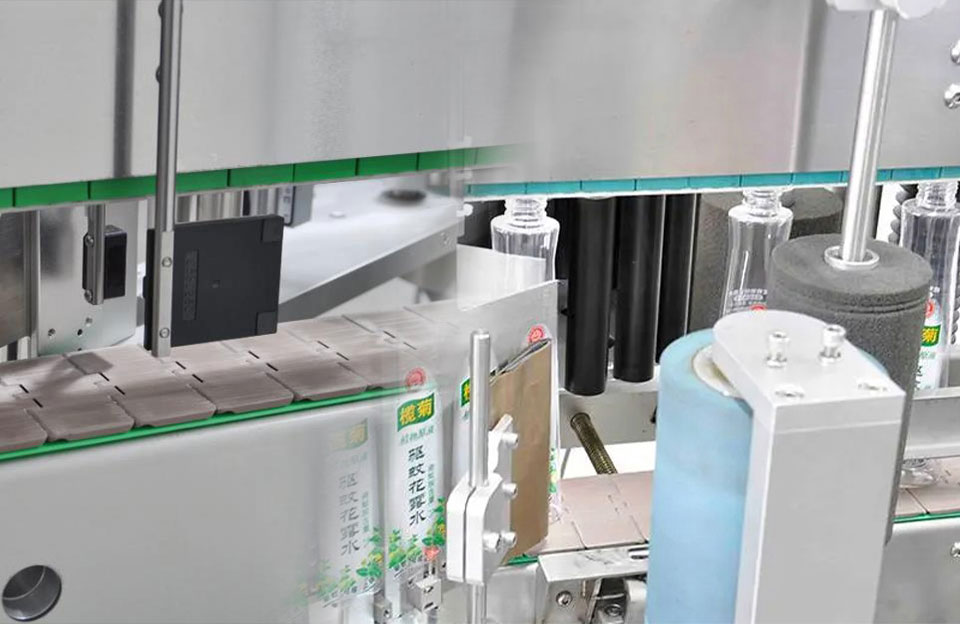The labeling machine is equipment with high efficiency that can label products. Enterprises choosing the right labeling machine for themselves and investing in it can bring long-term cost savings. Well-chosen machines are likely to have low maintenance requirements and high production rates, helping to make the labeling process more cost-effective.
Different Types of Labeling Machine
Labeling machines come in various types, each designed for specific labeling applications and production requirements. Here are some common types of labeling machines:
- Pressure-Sensitive Labeling Machine: This machine applies pressure-sensitive labels to products. When applying pressure, pressure-sensitive labels have an adhesive backing that sticks to the product’s surface. These machines are versatile and widely used in various industries, including food, beverage, pharmaceuticals, and cosmetics.
- Shrink Sleeve Labeling Machine: Shrink sleeve labeling machines apply labels made of heat-shrinkable plastic materials. The labels are placed on the product’s container, and heat is applied, causing the label to shrink and conform tightly to the container’s shape. Shrink sleeve labeling is commonly used for containers with irregular shapes or to create eye-catching designs on product packaging.
- Hot Melt Glue Labeling Machine: This machine uses hot melt glue to apply product labels. The glue is melted, applied to the label, and then adhered to the product. Hot melt glue labeling is commonly used for glass or PET bottles in the beverage industry.
- Cold Glue Labeling Machine: Cold glue labeling machines use a water-based adhesive to label products. The glue is applied to the label and then adhered to the product’s surface. This type of labeling is often used in the pharmaceutical, food, and beverage industries.
- Wrap-around Labeling Machine: Wrap-around labeling machines apply labels that wrap around the entire circumference of a container. They are suitable for labeling round or cylindrical containers such as bottles and cans.
- Top Labeling Machine: Top labeling machines apply labels to the top surface of products. They are commonly used for flat or square-shaped items like boxes, bags, and cartons.
- Front and Back Labeling Machine: This machine can simultaneously apply labels to the front and back of products, often used for containers with two opposite labeling surfaces.
- Print and Apply Labeling Machine: Print and apply labeling machines have a printing system that allows on-demand label printing. The label is printed with variable information, such as barcodes or product details, and then applied to the product.
- Sleeve Labeling Machine: Sleeve labeling machines apply full or partial sleeves to containers, creating an all-around label covering the container’s body. This type of labeling is often used for products like bottled beverages.
- RFID Labeling Machine: RFID (Radio Frequency Identification) labeling machines apply RFID tags to products. RFID tags enable wireless data transmission, allowing for efficient tracking and identification of products throughout the supply chain.

Pressure-Sensitive Label
How Do Companies Choose The Right Labeling Machine?
Choosing the right labeling machine for a company involves several considerations to ensure that the machine meets the specific needs and requirements of the business. Here are the key steps that companies typically follow to select the appropriate labeling machine:
- Assess Labeling Needs: The first step is to analyze the company’s labeling requirements. Determine the type of products to be labeled, the label size, shape, material, production speed, and any special features or functionalities required. Also, consider the future growth and scalability of the business.
- Labeling Technology: There are various labeling technologies available, such as pressure-sensitive labeling, shrink sleeve labeling, hot melt glue labeling, etc. Each technology has its advantages and is suitable for different types of products and labeling applications. Select the technology that best aligns with the product and production process.
- Machine Speed and Capacity: Consider the production output and choose a labeling machine to handle the required labeling speed. The machine’s capacity should match or exceed the production rate to avoid bottlenecks in the labeling process.
- Label Accuracy and Consistency: The labeling machine should offer precise placement to ensure product consistency. This is particularly important when labels must be aligned perfectly or applied in specific positions.
- Machine Size and Footprint: Evaluate the available space in the production facility and choose a labeling machine that fits well within the available area. Consider the machine’s dimensions, conveyor length, and additional space required for maintenance and operator access.
- Integration with Existing Production Line: Ensure that the selected labeling machine can seamlessly integrate into the existing production line. It should be compatible with other equipment like filling, capping, and packaging machinery.
- Ease of Use and Maintenance: A user-friendly labeling machine reduces the learning curve for operators and minimizes the chances of errors during setup and operation. Additionally, consider the maintenance requirements and availability of spare parts.
- Quality and Durability: Look for labeling machines from reputable manufacturers known for their quality and reliability. A robust and durable machine will reduce breakdowns and lower maintenance costs.
- Budget Considerations: Cost is essential in any equipment purchase decision. Compare the features and capabilities of different labeling machines in relation to their cost to find the best value for your investment.
- Safety and Compliance: Ensure that the chosen labeling machine meets safety standards and complies with relevant regulations in your industry.
- Customer Support and Warranty: Check the level of customer support the manufacturer provides, including training, technical assistance, and after-sales service. Also, inquire about the warranty coverage for the machine.
- Reviews and References: Seek feedback from other businesses that have used the same or similar labeling machines. Online reviews and testimonials can also provide insights into the machine’s performance and reliability.
Conclusion
The labeling machine is an essential investment that can significantly impact a company’s production efficiency, product quality, compliance, and overall success. It is crucial for companies to thoroughly assess their labeling needs and carefully select a machine that aligns with their requirements and business objectives.


